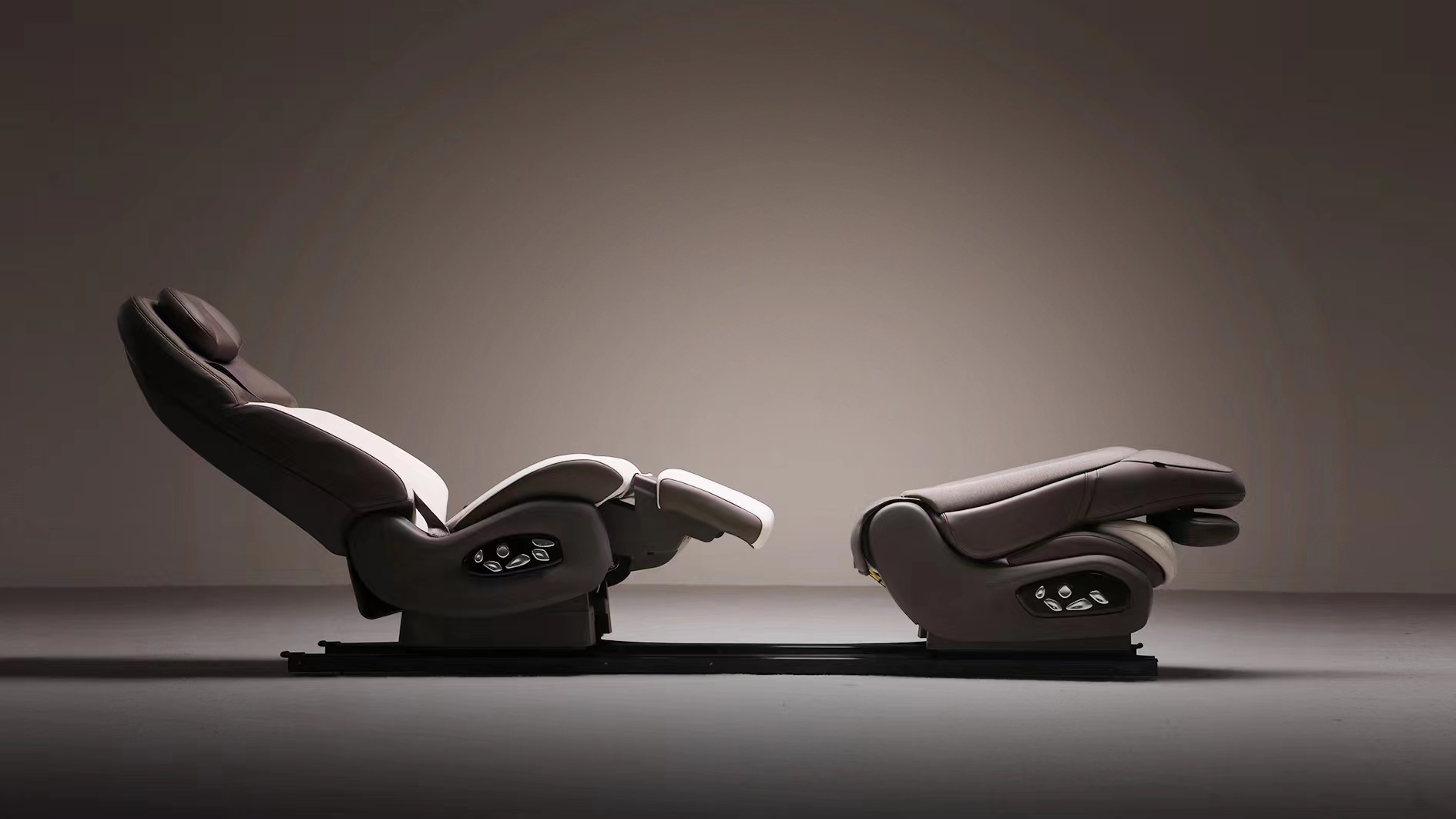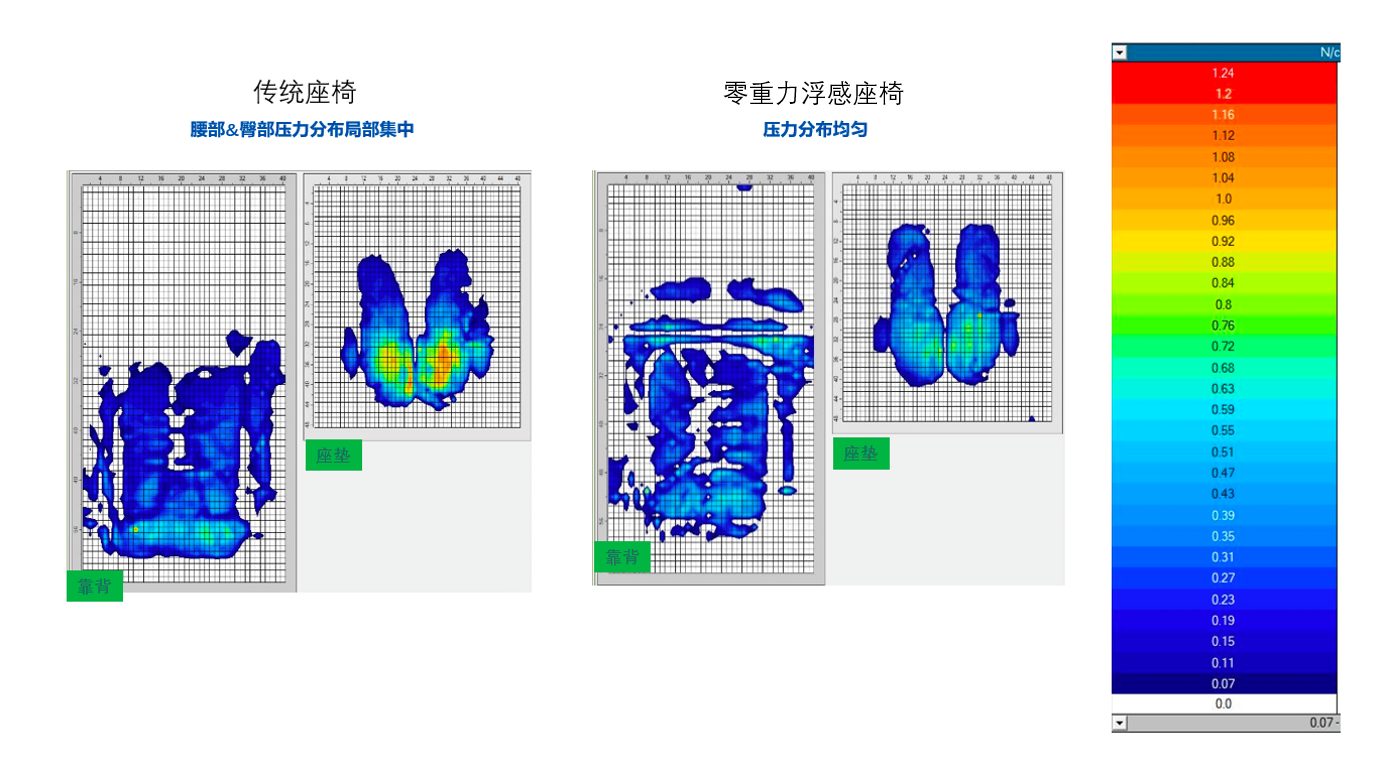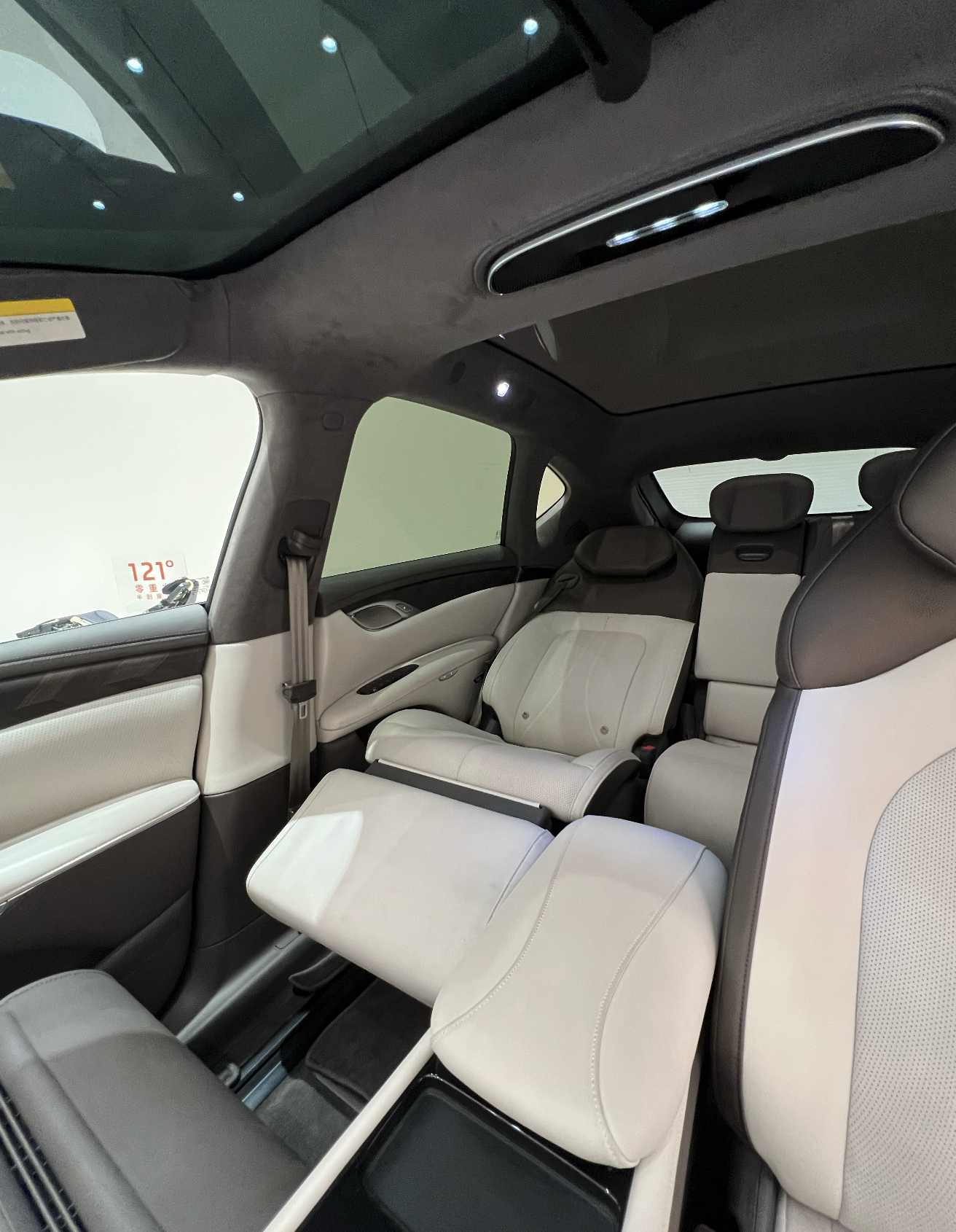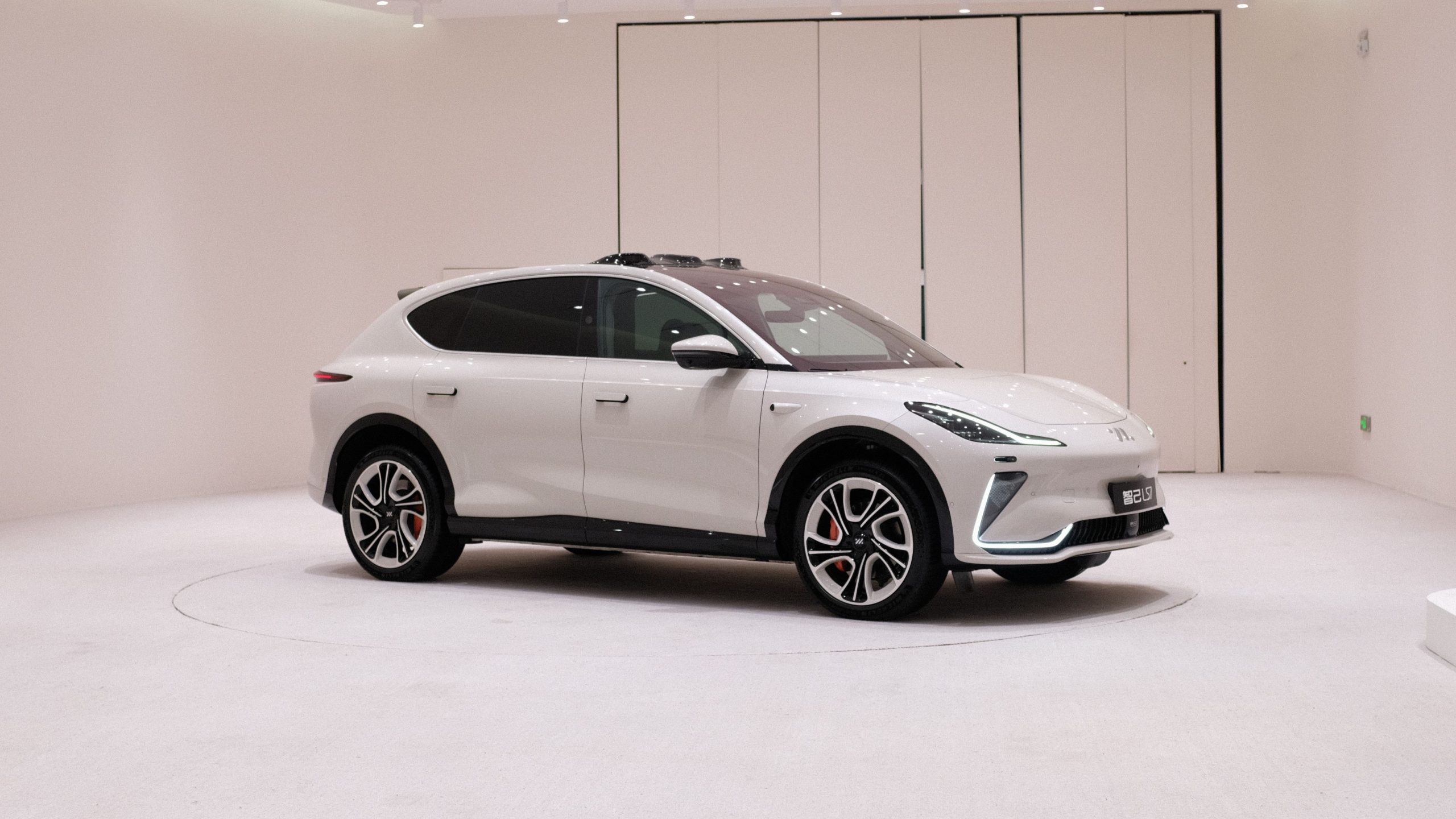In the past two years, we may gradually see new cars starting to offer luxurious and comfortable seating arrangements in the second row. Previously, for a 5-seater car with a price of 300,000 RMB, the second row was basically just a space for one person to sit. When it comes to second-row configurations, besides rear air vents and central armrests, at most there might be one cup holder.
The Smartcar LS7, which I experienced today, has some special ideas about the five seats, especially the second-row seats.
Five-seat cars also adjust the seats
The first impression of the zero-gravity mode of this seat can be described with one word: “ridiculous.”
In order to achieve a large enough space for zero gravity mode, the LS7 specially redesigned the entire right side of the cabin. From the front and rear integrated electric sliding rails, to the passenger seat that can be folded and placed under the instrument panel, to the independent seats that can be compared to luxury MPV second rows.

Each of these points is an innovation for luxury 5-seater cars. When you discover that the interior space can be arranged in such a way, it does feel a bit ridiculous.
Behind these marketing words, what I am most concerned about is what “zero gravity” really means.

According to conventional understanding, anything on the surface of the earth will not escape gravity, so the so-called “zero gravity” obviously cannot be taken literally. In recent years, the term “zero gravity” has appeared on various luxury cars, referring to the seat angle reference proposed by NASA for spacecraft cabins, that is, the angle between the seat cushion and the backrest should be 128±7 degrees to meet NASA’s aeronautical zero-gravity requirements. When the LS7’s seats are in zero-gravity mode, the angle between the backrest and seat cushion is 121 degrees, which falls within this reference range.
The meaning behind this term requires the use of a set of high-precision scientific instruments to demonstrate. In this event, IM brought a high-precision pressure pad worth six figures to help demonstrate the supporting force of the IM zero-gravity seat for the passengers on site.
The principle of this pressure pad is very simple. There are many small squares painted on it, and each small square contains an independent pressure sensor. After being connected to the computer, it can display the current force situation of the entire pressure pad in real-time, and represent the local pressure intensity through colors. The closer the color is to red, the greater the current pressure, and vice versa.
When I personally sat on it, I could also directly see on the large screen next to it the actual contact and force situation between my body and the seat, which were basically small forces on the entire contact surface, with very even distribution of colors.
Aside from the principle, this visualization also needs to be compared with other seats to perceive the characteristics of the zero-gravity mode.

Compared with conventional seats and postures, it is clearly visible that the force distribution of the zero-gravity mode seat on the entire contact surface has become more even, and the pressure difference on the entire force surface is also visibly small. The pressure of a regular seat is concentrated in the area where the human body sits, and because the backrest angle is more vertical, the force on the back is very low.
In addition, IM also displayed the internal structure of the entire seat, and from the material and structure, the cost of the LS7 seat should not be cheap.
Including the semi-aniline leather, there are a total of six layers in the padding and structure, with the bottom layer as the frame layer. In the middle, there are three layers of padding, a massage airbag, and a lumbar support airbag.
What I am most curious about is the semi-aniline leather.
Generally speaking, the surface materials of car seats are divided into many levels, ranging from the cheapest fabric to faux leather, genuine leather, and the top-level semi-aniline and full-aniline genuine leather. These correspond to the quality of the leather itself and the complexity of subsequent processing.

Therefore, the conventional Nappa leather pales in comparison to semi-aniline leather, which is generally used in million-dollar luxury cars. The fact that IM offers semi-aniline leather as an optional upgrade is a bit crazy in terms of its pricing.
Large Space + Premium Materials = ?
If it weren’t for the LS7 parked next to it, I almost forgot that this event was about experiencing the intelligent cockpit rather than the seats.

When sitting in the LS7, the most prominent intuitive feeling is the super-large forward vision. This vision comes from two special points, one is the semi-circular steering wheel with a front-through screen for the front row, so there’s no obstruction when viewing the instrument panel from the driver’s seat. The other point is the super-large windshield, which is so big on the LS7 that the front row can directly look up to the sky.The combination of LS7’s design will provide a significantly improved field of view in the forward direction during normal driving, aside from the visual obstruction caused by the A-pillars on both sides of the front seats.
Moreover, unconventional seat design was implemented into the car to achieve maximum zero-gravity mode space. The front passenger seat was re-designed innovatively as a sliding rear seat, allowing it to be folded forwards and moved below the instrument panel, thus making space for the right rear seat as much as possible.
Car space is very limited, requiring cabin designers to take space from each dimension to use. In recent years, the most common method has been to design the car roof as a panoramic sunroof. However, this design sacrifices the daily driving experience, and it is difficult to say it is a perfect solution.

With the LS7’s flexible space utilization, engineers have undoubtedly made significant breakthroughs in design innovation.
Ultimately
During the event, LS7’s designers also shared their interpretation of the three generational changes of SUV. In the 2.0 era, SUVs underwent a revolution in their cabin systems with electrification, and in the following 3.0 era, the LS7 represents value liberation and experience sublimation to pioneer SUVs towards a brighter future.
The LS7’s innovative space layout and premium materials will bring a brand new perspective and way of thinking to the SUV’s cabin design. However, many would be astonished by this kind of interior design.Are you interested? If so, please let me know if you would like to order a car or make arrangements to pick one up.
This article is a translation by ChatGPT of a Chinese report from 42HOW. If you have any questions about it, please email bd@42how.com.
